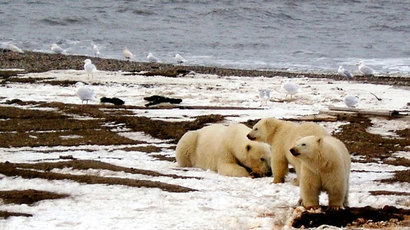Wildlife populations decline by over 50% since 1970 – WWF

The world’s wildlife populations, including mammals, birds, reptiles, amphibians and fish, have dropped by more than half in the last 40 years, the World Wildlife Fund’s (WWF) said in its latest report.
“Put another way, in less than two human generations,
population sizes of vertebrate species have dropped by
half,” Director General of WWF International Marco
Lambertini said in a statement.
The WWF released its Living Planet Index (LPI) report on Tuesday,
published every two years.
After measuring more than 10,000 representative populations of
mammals, birds, reptiles, amphibians and fish between 1970 and
2010, WWF concluded that the populations of those species have
dropped by 52 percent.
This year’s release marks a huge decline in comparison to
previous report, which revealed a drop of 28 percent between 1970
and 2008.
“We should feel a strong sense of urgency because we have to
really deal with these issues in the next few decades,”
Lambertini said. “We are using nature’s gifts as if we had
more than just one Earth at our disposal. By taking more from our
ecosystems and natural processes than can be replenished, we are
jeopardizing our very future.”

Largest ecological footprints left by Kuwait, Qatar, UAE, US
The report found that Kuwait had the worst record in the past
four decades, with the most resources consumed and wasted per
head of any country, followed by Qatar and the United Arab
Emirates.
The US also has a bad track record, with the report noting that
“if we lived the lifestyle of a typical resident of the USA,
we would need 3.9 planets.”
Other countries that left one of the worst ecological footprints
included Denmark, Belgium, Trinidad and Tobago, Singapore,
Bahrain and Sweden.
Some of the poorer countries had better sustainability results,
including India, Indonesia and the Democratic Republic of Congo.
In terms of species, the biggest fall was reported among the
populations of freshwater fish, down by 76 percent over the last
four decades, the report stated.

The loss of natural habitats, excessive hunting and fishing, as
well as climate change were some of the main reasons behind the
overall decline.
Also, WWF said that the Earth has crossed three of out the nine
identified "planetary boundaries,” which are “potentially
catastrophic changes to life as we know it,” including
biodiversity, carbon dioxide levels and nitrogen pollution from
fertilizers.
Another two are currently in danger of being crossed: ocean
acidification and phosphorus levels in fresh water.
"Given the pace and scale of change, we can no longer exclude the
possibility of reaching critical tipping points that could
abruptly and irreversibly change living conditions on
Earth," the report said.
Lambertini remains hopeful though, urging public and private
sectors to act and search for ways to protect the environment.
“The upcoming generation can seize the opportunity that we
have so far failed to grasp, to close this destructive chapter in
our history, and build a future where people can live and prosper
in harmony with nature,” Lambertini said.
“Things look so worrying that it may seem difficult to feel
positive about the future. Difficult, certainly, but not
impossible – because it is in ourselves, who have caused the
problem, that we can find the solution.”














